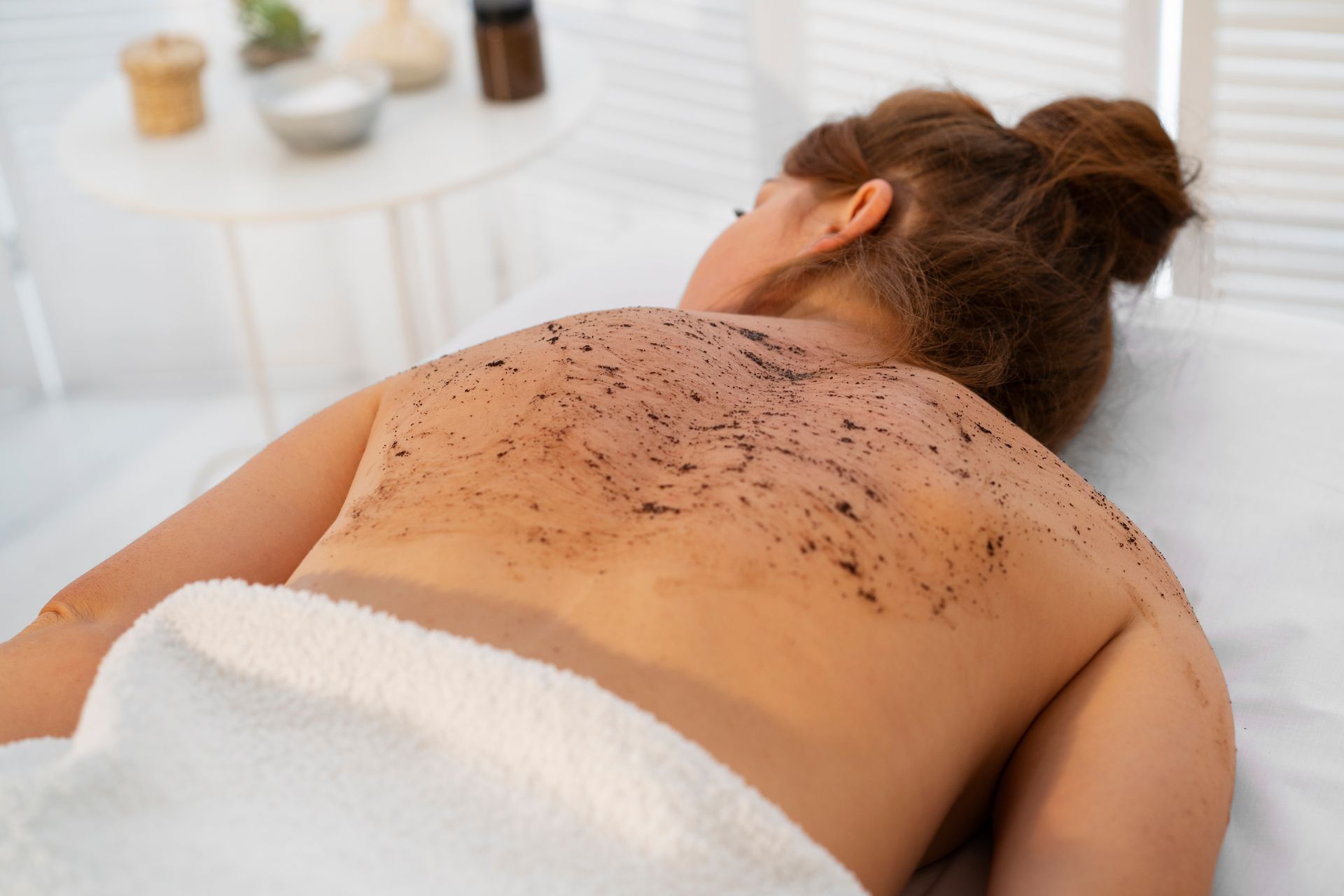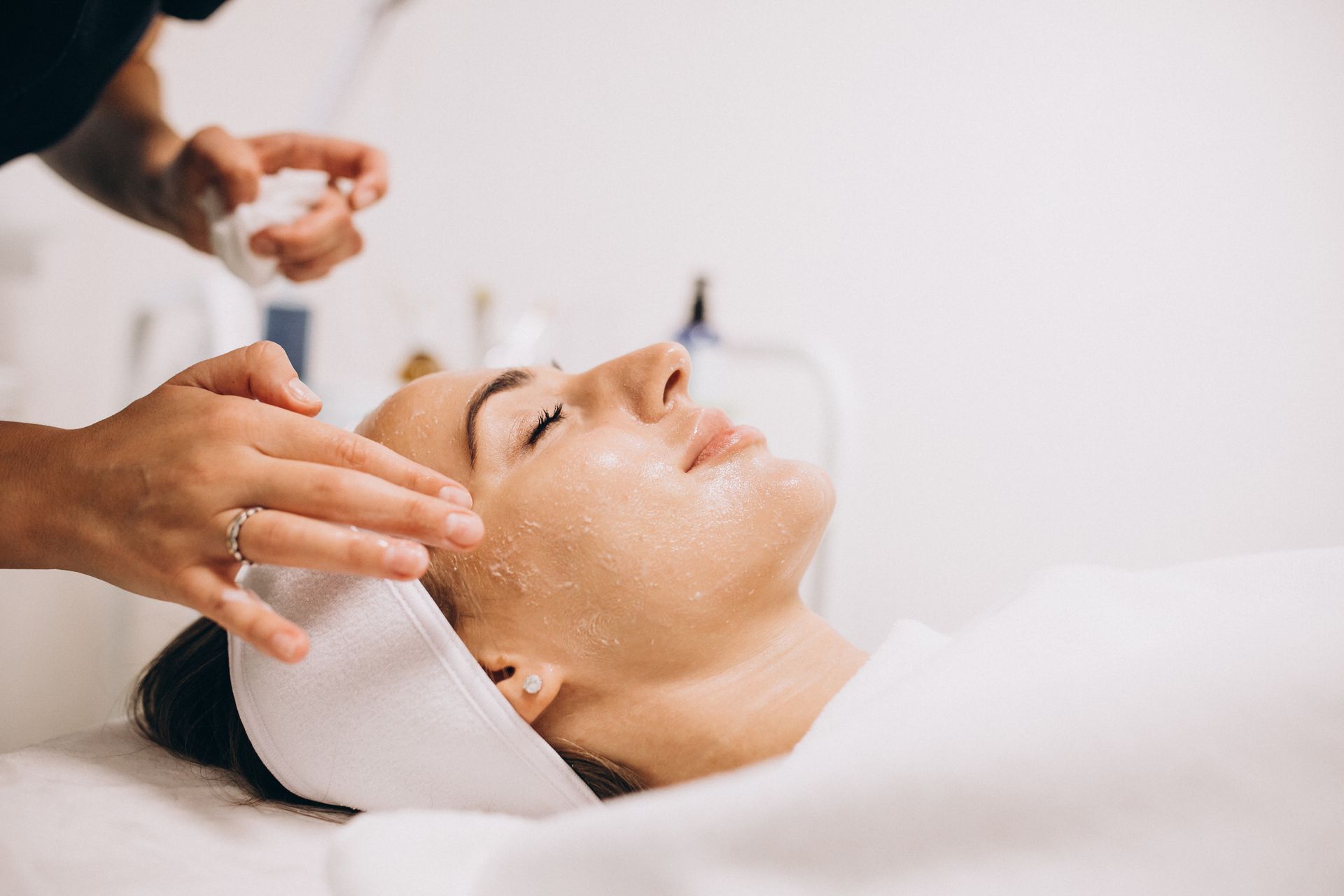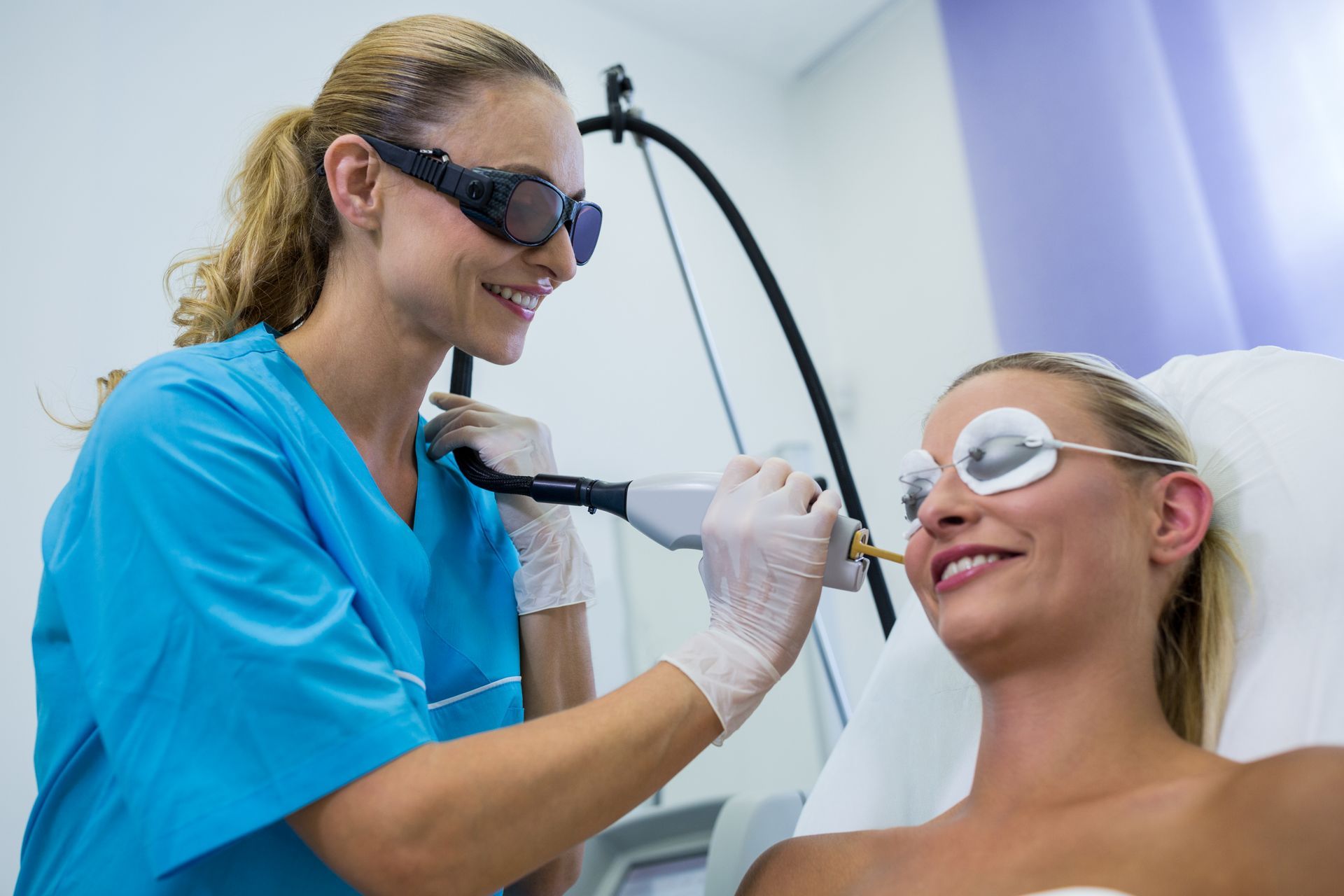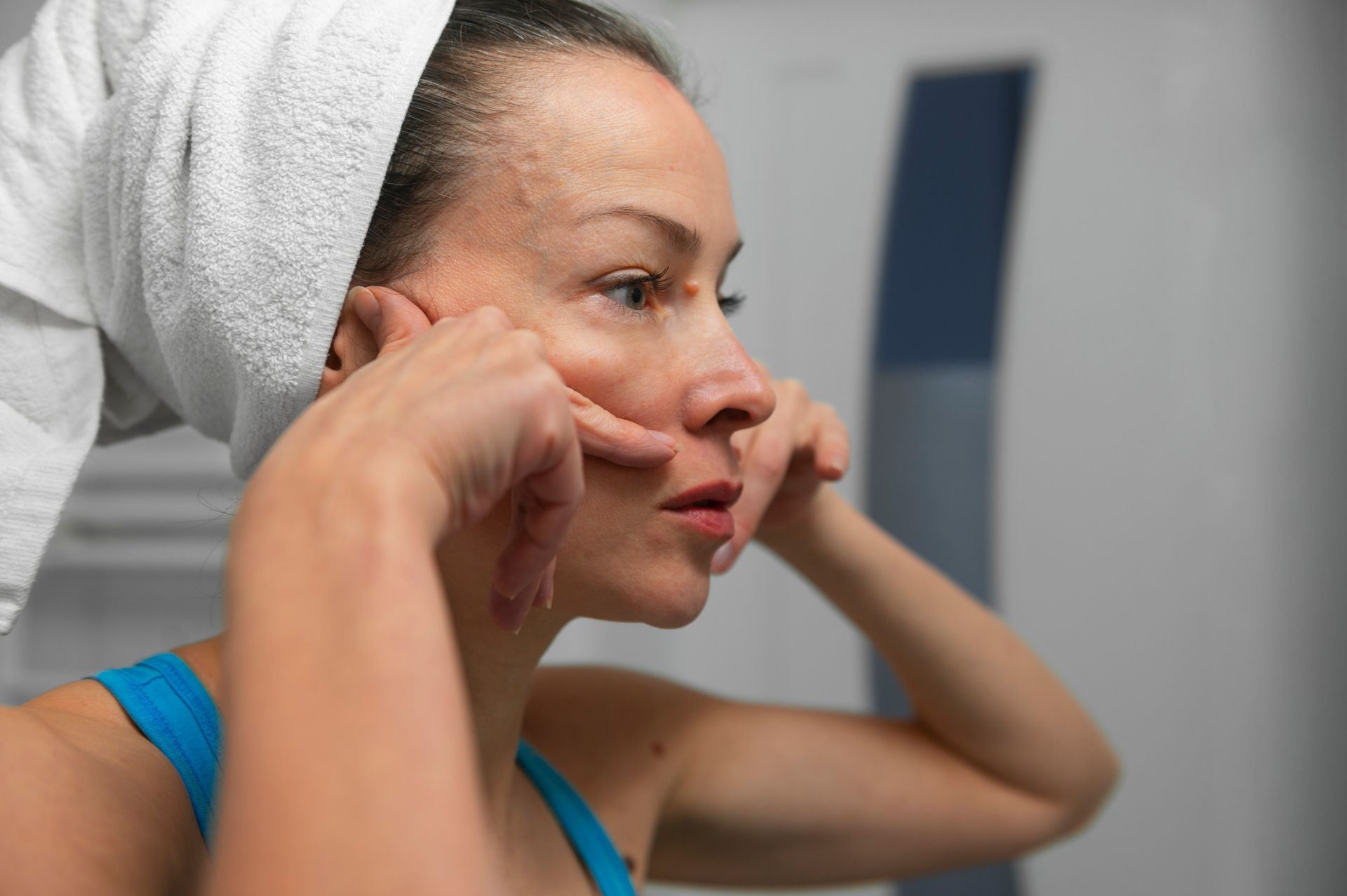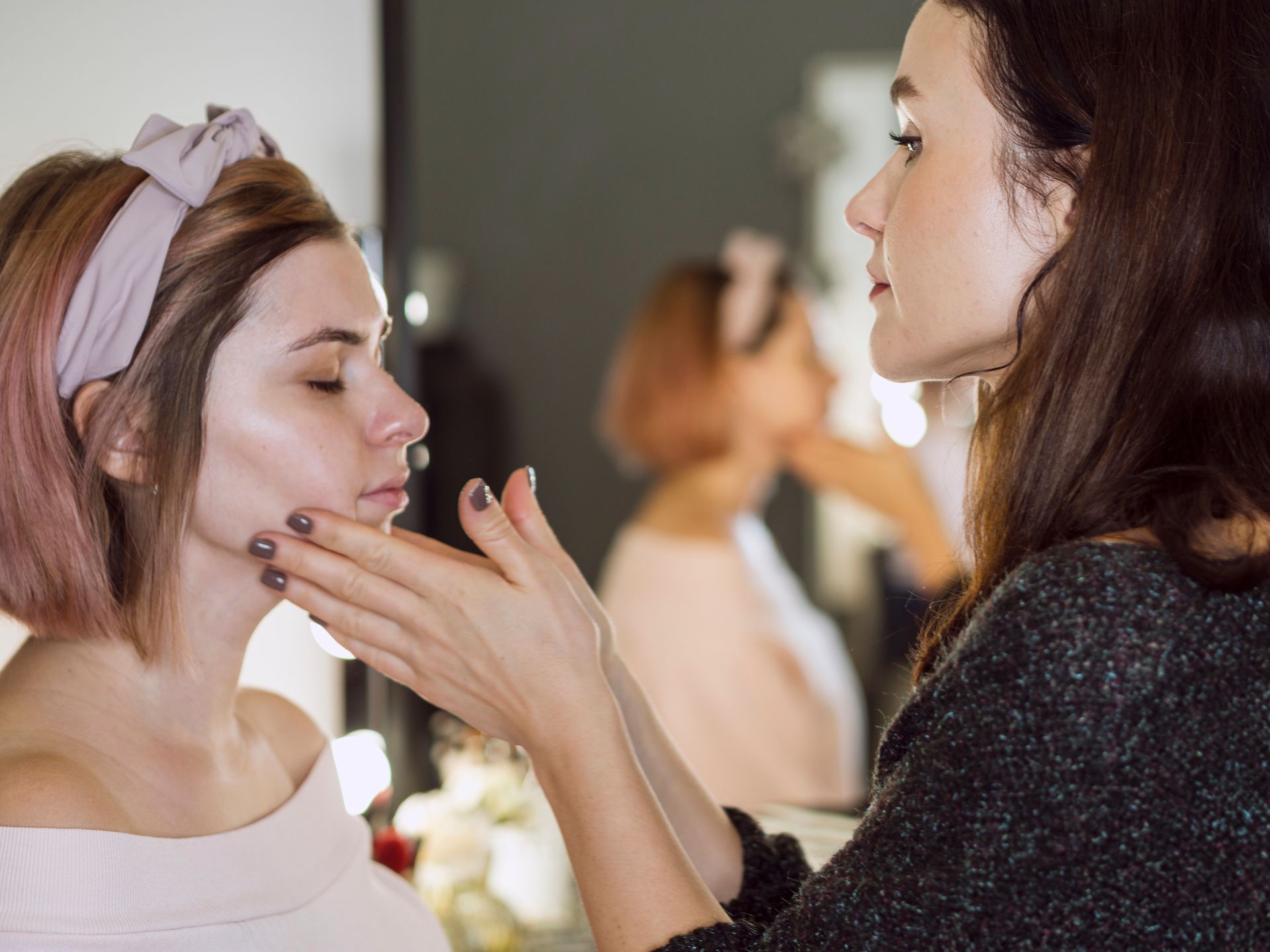What Areas Can You Treat With Laser Hair Removal
In the eternal quest for smooth, hair-free skin, many have turned to the remarkable world of laser hair removal. With the promise of enduring smoothness and the convenience of a life less dependent on razors and waxing, laser hair removal has become an increasingly popular choice. But what sets this revolutionary procedure apart from traditional hair removal methods is not only its effectiveness but also its remarkable versatility.
The remarkable adaptability of laser hair removal makes it unique. It isn't limited to just a single area; instead, it's a versatile solution that can be applied to numerous parts of the body. From delicate facial features to the larger expanses of the torso and limbs, laser hair removal can help you achieve that
silky-smooth skin you've always desired. But which areas are suitable, and what should you consider before embarking on this journey towards a hair-free lifestyle? In this exploration, we will see the diverse landscape of laser hair removal and the various areas it can effectively treat. Get ready to unlock the secrets of this transformative procedure and discover the possibilities that await you.
Common Areas for Laser Hair Removal
In each of these common areas, laser hair removal offers a versatile and long-lasting solution. While the number of sessions required may vary depending on factors like hair color and skin type, the results are often well worth the investment, providing you with the convenience of smooth, hair-free skin.
Facial Areas
Upper Lip: Laser hair removal is highly effective for the upper lip area, a common concern for many individuals. It can help eliminate the fine and often noticeable hair that tends to grow in this region. The treatment is precise, and sessions are relatively quick, making it a popular choice for those seeking smooth, hair-free lips.
Chin:
The chin is another facial area where laser hair removal is frequently sought. Whether you're dealing with stray hairs or more substantial growth, laser technology can target and remove unwanted hair effectively. It's particularly beneficial for individuals who are tired of daily plucking or waxing in this area.
Sideburns:
Sideburns can be a source of concern for both men and women. Laser hair removal can help redefine your facial features by removing unwanted hair on the sideburns. It's a precise and long-lasting solution that can enhance your appearance.
Body Areas
Underarms:
Underarm hair can be particularly bothersome due to the
sensitivity of the skin in this area. Laser hair removal for underarms is a quick and effective way to achieve hair-free and smoother skin. In most cases, hair growth is significantly reduced after just a few sessions.
Bikini Area:
Many people opt for laser hair removal in the bikini area to prepare for a carefree summer or to eliminate the need for constant maintenance. The treatment is adaptable, allowing you to choose from different bikini styles, from a basic bikini line to a full Brazilian, tailoring the results to your preferences.
Legs:
Laser hair removal for the legs is a popular choice among those who want to enjoy silky-smooth legs without the hassle of
regular shaving or waxing. It's efficient for both upper and lower legs, providing long-lasting results that can make your legs feel perpetually beach-ready.
Arms:
Whether it's your forearms or upper arms, laser hair removal can significantly reduce hair growth. This is especially beneficial for individuals with coarse or dark arm hair. The procedure is efficient and relatively painless, making it a convenient option.
Back and Chest
For many men, excessive hair growth on the back and chest can be a source of self-consciousness. Laser hair removal offers a practical solution for reducing hair in these areas, often leading to a smoother, more defined appearance. The treatments are tailored to your specific needs, ensuring you achieve the results you desire.
Neck and Shoulders
Unwanted hair on the neck and shoulders can be bothersome, affecting both men and women. Laser hair removal can effectively target these areas, providing a clean and hair-free look. The precision of the treatment ensures that only the unwanted hair is removed, leaving your natural contours intact.
Less Common Areas for Laser Hair Removal
In these less common areas, laser hair removal offers a solution for those who seek a more comprehensive approach to hair removal. While treatments may be less frequent and require fewer sessions compared to larger body areas, the results can be equally satisfying. The versatility of laser hair removal makes it an attractive choice for addressing even the most discreet and unexpected areas of unwanted hair growth.
Ears:
Laser hair removal for the ears might not be as commonly discussed as other areas, but it's an option for those who are concerned about unwanted ear hair. Excessive or unruly ear hair can be a source of self-consciousness for some individuals. Laser hair removal is a precise and efficient method to address this concern. It's a quick and virtually painless process that can help you achieve a cleaner and more polished look, free from the inconvenience of regular trimming or waxing.
Toes and Feet:
The toes and feet are areas that are often overlooked when it comes to hair removal, but they can also benefit from laser treatment. For those who prefer wearing open-toed shoes or sandals, hair-free toes and feet can add to the overall aesthetic appeal. Laser hair removal can target the fine hairs on your toes and feet, offering you the freedom to go barefoot without worrying about unwanted hair.
Hands and Fingers:
Unwanted hair on the hands and fingers can be a concern for both men and women. While this may not be a primary area of focus for most people, it can still be a source of self-consciousness. Laser hair removal is a precise and effective solution for addressing hair on the hands and fingers. It provides a clean and groomed appearance, which is particularly beneficial for those who work in professions where well-kept hands are essential.
Special Considerations
Sensitive Areas
Laser hair removal is generally safe and effective for most individuals, but it's important to take special precautions when treating sensitive areas. Sensitive areas can include regions with thinner or more delicate skin, such as the face, neck, underarms, and bikini line. In these areas, it's crucial to:
- Use lower energy settings to minimize discomfort and the risk of skin irritation.
- Ensure the treatment is administered by a skilled and experienced practitioner.
- Communicate openly with your provider about any discomfort or pain during the procedure, as they can adjust the settings or use topical numbing creams to enhance your comfort.
Tattooed Skin
Laser hair removal can be challenging when dealing with tattooed skin, as the laser targets pigment in the hair follicles. The presence of a tattoo in the treatment area can potentially interfere with the procedure. Consider these factors:
- Dark tattoos absorb the laser energy, which can result in discomfort, burns, or even damage to the tattoo itself.
- Light-colored tattoos are less likely to absorb the laser energy, but there's still a risk, especially with darker skin tones.
- It's essential to consult with a qualified practitioner who has experience working with tattooed skin. They can adjust the laser settings and use specialized equipment to minimize the risks.
Skin Types and Tones
Skin type and tone play a significant role in the success of laser hair removal. The Fitzpatrick scale is commonly used to classify skin types, ranging from Type I (very fair) to Type VI (very dark). Lighter skin tones with darker hair provide the ideal contrast for effective laser hair removal. Here are some considerations:
- Individuals with darker skin (Fitzpatrick Type IV-VI) may have an increased risk of pigment changes or skin damage. Laser hair removal providers should use specialized lasers, like Nd:YAG, to safely treat darker skin tones.
- Lighter skin tones (Fitzpatrick Type I-III) generally respond well to laser hair removal, with less risk of complications. However, it's still crucial to ensure the treatment is administered by a trained professional.
Potential Risks
While laser hair removal is generally safe and effective, there are some potential risks to be aware of:
- Temporary redness, swelling, or itching is common after the procedure, but these side effects usually subside within a few hours or days.
- In some cases, the treated area may experience hypo- or hyperpigmentation (lightening or darkening of the skin). These changes are usually temporary but can be long-lasting in rare instances.
- Although rare, laser hair removal can lead to scarring, especially when not performed by a trained professional or if the treated area is not properly cared for post-treatment.
- Protecting the eyes from laser exposure is crucial during the procedure. Both the patient and the practitioner should wear appropriate eye protection to prevent potential eye damage.
It's vital to consult with a qualified and experienced practitioner who can assess your unique needs, address special considerations, and provide a personalized treatment plan to ensure the best
possible results while minimizing risks. Open communication with your provider is key to a successful laser hair removal experience.
The Laser Hair Removal Process
The laser hair removal process begins with a comprehensive consultation where your goals, medical history, and specific concerns are discussed with the practitioner. This stage also involves a crucial skin assessment to evaluate your skin type, hair color, and their contrast, all of which help determine the most suitable laser technology and settings for your treatment. To ensure your skin's compatibility with the laser and to fine-tune energy settings, a patch test is usually conducted during this initial consultation. This test involves treating a small area, and its results are monitored over a few weeks to ensure your safety and comfort during the entire treatment course. You'll also receive pre-treatment guidelines to prepare adequately, which may include sun avoidance, discontinuing other hair removal methods, and shaving the treatment area for optimal results.
Following a laser hair removal session, post-treatment sensations, including redness, swelling, and a mild sunburn-like sensation, may be experienced; these side effects are generally temporary and subside within hours to a few days. It's vital to shield the treated area from sun exposure for several weeks, as your skin becomes more sensitive to UV rays. This involves the use of sunscreen and avoiding tanning beds. To ensure optimal results and minimize irritation, it's recommended to abstain from activities like hot baths, saunas, or using harsh skincare products.
Over the subsequent weeks, you may observe hair shedding in the treated area, signifying the
success of the treatment as damaged hair follicles release treated hairs. For the best results, adhere to the schedule advised by your practitioner for subsequent laser hair removal sessions. The laser hair removal process is a path to long-term hair reduction and smoother skin, and by following your practitioner's guidance and practicing effective aftercare, you can achieve your desired results while minimizing potential side effects.
Conclusion
Laser hair removal is a transformative and versatile solution for achieving smooth, hair-free skin. From the commonly treated areas like the face, underarms, legs, and back, to the less common and unexpected areas such as ears, toes, and hands, this revolutionary procedure offers a wide range of possibilities. By addressing special considerations, like sensitivity, tattoos, and skin types, and understanding the laser hair removal process, one can embark on a journey towards lasting results and the convenience of a life free from the constant maintenance of traditional hair removal methods. Whether you're seeking a solution for a particular concern or desiring the ease of permanently reduced hair growth, laser hair removal can unlock a newfound sense of confidence and freedom, providing you with the silky-smooth skin you've always desired.
BOOK YOUR FREE SESSION
